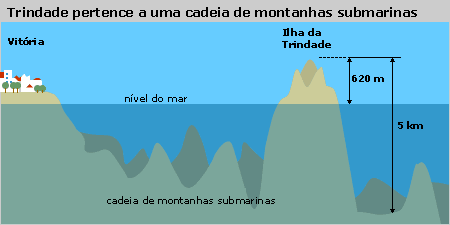Este post também está disponível em:
Português
English
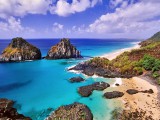
Trindade e Martim Vaz is a Brazilian archipelago in the Atlantic Ocean, being a Federal Territory aligned to the coast of Espírito Santo, situated in the Atlantic Ocean, and about 1,200 kilometres east of Vitória.
It consists of two main islands (Trindade and Martim Vaz), separated by 48 kilometres, which add up to a total area of 10.4 km².
The islands of Trindade and Martim Vaz are considered by navigators as a huge wall in the middle of the Atlantic.
They are uninhabited, except for a garrison of 32 soldiers of the Brazilian Navy, who have their base on Trindade Island.
During the reign of King Manuel I of Portugal, the island of Martim Vaz was discovered in 1501 by the Galician navigator João da Nova and about a year later, the Portuguese navigator Estêvão da Gama visited the largest island and called it “Ilha da Trindade”.
The Trindade and Martim Vaz islands remained in Portuguese possession until Brazil’s independence, when they became Brazilian.
In 1890, the United Kingdom occupied Trindade, but the British abandoned the islands in 1896, after an agreement between the two countries, which included Portuguese mediation.
Videos about “Archipelago of Trindade”


Ilha de Trindade e Martim Vaz - Expedição
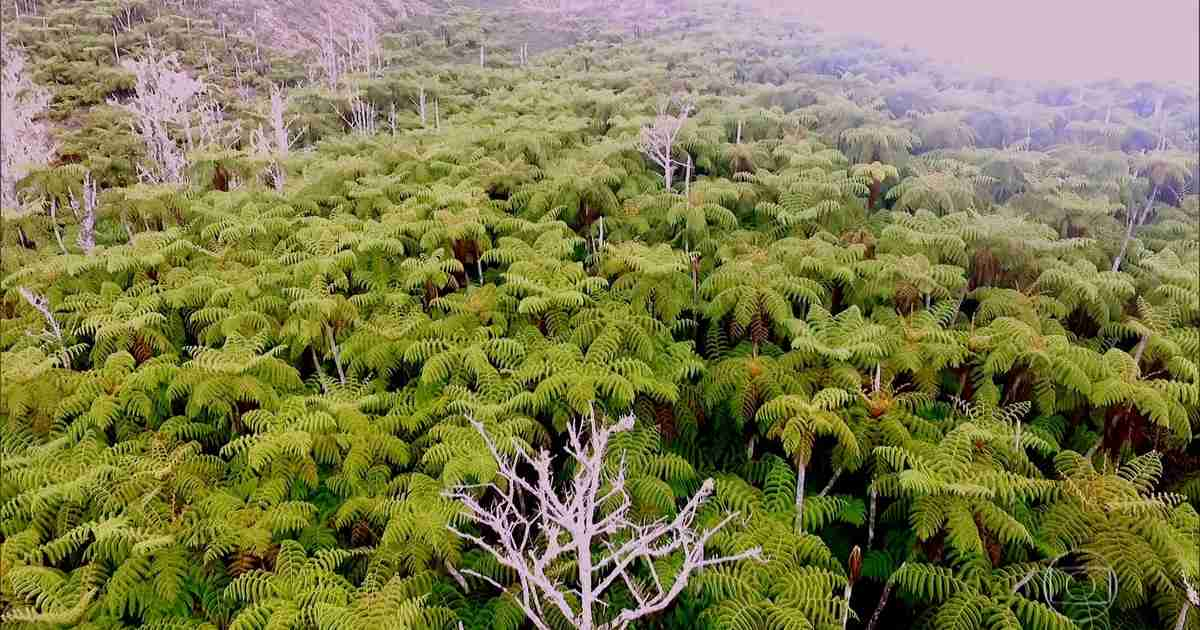
Vegetação na Ilha de Trindade
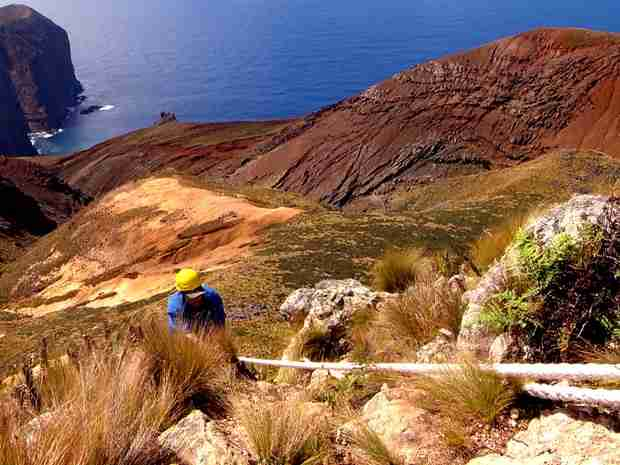
Samambaias na Ilha de Trindade
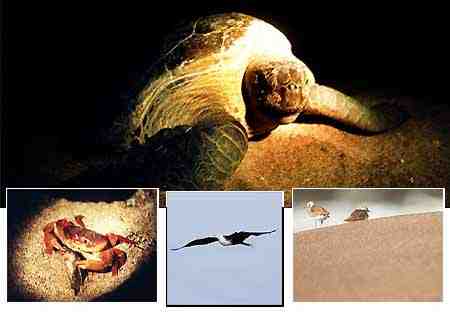
Animais na Ilha de Trindade
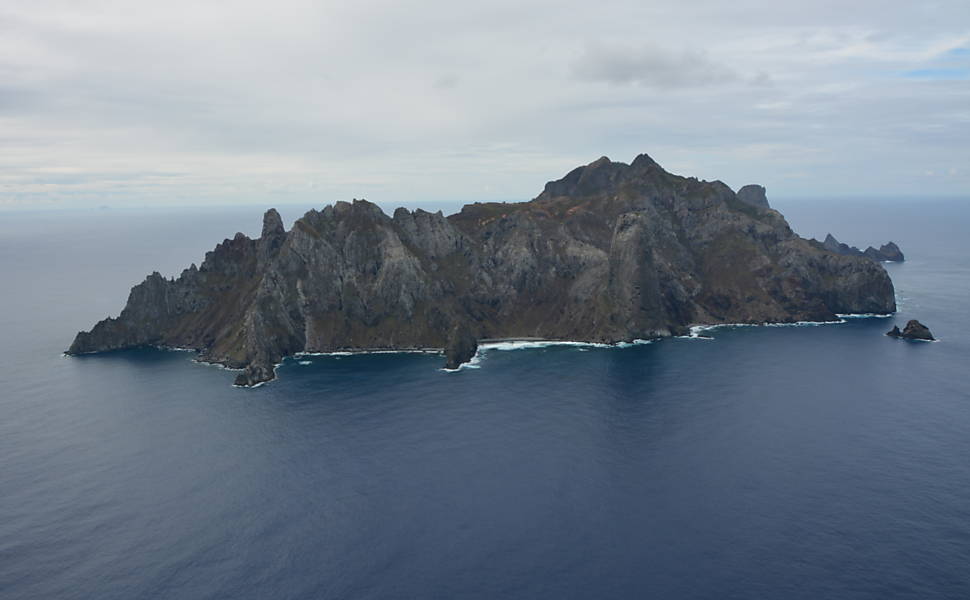
Ilha de Trindade - Episódio 1

Ilha de Trindade - Episódio 2

Ilha de Trindade - Episódio 3

Ilha de Trindade - Episódio 4

Ilha de Trindade e Martim Vaz - Reportagem23:11
Islands of Martim Vaz
It is a group of islands formed by the main island (Martim Vaz, with a maximum altitude of 175 metres), two steep and inaccessible islets (Ilha do Norte, with a maximum altitude of 65 metres, and Ilha do Sul, with a maximum altitude of 122 metres) and several smaller rocks, such as Rochedo Agulha, scattered 48 km east of Trindade, making up a total area of 0.3 km² (30 hectares).

The vegetation is predominantly undergrowth, with the presence of rare shrubs at the top, which are mercilessly whipped by the wind. The fauna consists only of crabs, endemic spiders and hundreds of migratory birds.
As slabs and high ground surround the islands, revealing a minefield not always emersed, unknown and little recorded on nautical charts, the area is shipwreck in sight for unsuspecting vessels of any size.
The only less risky way to land is by helicopter, as it is literally vertical and flat on top, like a plateau (it rises abruptly from the sea).
Ilha da Trindade
Trindade é uma ilha vulcânica ao largo da costa do estado do Espírito Santo, Brasil, que juntamente com Martim Vaz forma um arquipélago. Com uma área de 9,2 quilómetros quadrados, o seu território está incluído no município de Vitória. Está a 1.167 quilómetros de distância do continente.
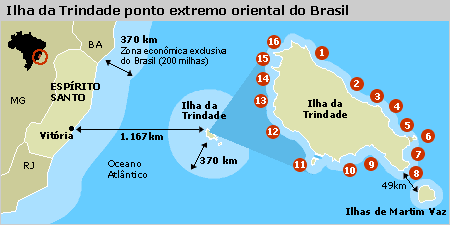
- Praia dos Cabritos 9. Praia do Príncipe
- Praia dos Portugueses 10. Praia do Lixo
- Praia da Calheta 11. Farilhões
- Praia dos Andradas 12. Praia do Eme
- Praia das Tartarugas 13. Praia da Cachoeira
- Praia do Parcel 14. Praia do Noroeste
- Praia do Túnel 15. Praia das Orelhas
- Praia da Ponta do Túnel 16. Ponta Norte
Discovered in 1512 by João da Nova, they were visited in 1514 by Juan de la Cosa, who named the main island Santa Maria Esmeralda.
In 1768, the Frenchman La Pérouse tried to climb the rocks, but two of his sailors died in the attempt. In honour of the dead, he named the islands of the group Martim Vaz.
In 1951, the Brazilian Navy wanted to formally take possession of the islands, and a military garrison tried to raise the flag on the main island, but the vessel sank when it hit a rock and 12 sailors lost their lives.
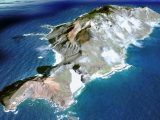
In 1960 a British scientific expedition with the ship HMS Owen found a safe cove and was able to explore the larger island. The first landing on South Islet was made in 1962 by a military team aboard a helicopter.
More recently, in 2007, there were other landings by Naval Aviation helicopter for the replacement of the National Flag flown there.
Researcher Evaristo Scorza found on the islands some evidence of an extremely rare mineral, hauynite, only found in ancient times in China and Slovakia.
History of Trindade Island
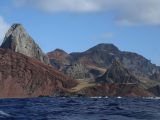
The fleet of Estevão da Gama, on its way to India, at the latitude of 20º S, discovered, on 18 May 1502, an island which it named Ilha da Trindade.
Several illustrious visitors have been there, the best known being the English astronomer Edmund Halley, who came to take possession of the island on behalf of the British monarchy (1700).

In 1895, the British once again tried to obtain possession of this strategic position in the South Atlantic, but Brazilian diplomatic efforts, combined with the support of Portuguese diplomacy, restored possession of the island of Trindade to Brazil.
To affirm once and for all Brazilian sovereignty over the island, a landmark was erected on 24 January 1897.
20th and 21st centuries
Although it has no permanent population, since 1957 the archipelago has hosted the Trindade Island Oceanographic Post (POIT), garrisoned by 32 men from the Brazilian Navy, half of whom take turns every two months.
In addition to guarding this Brazilian island territory, these men collect tide gauge and meteorological data from that region of the South Atlantic.
Geography of the Trindade and Martim Vaz Islands
The Trindade and Martim Vaz Islands are located 1,200 km off the coast of Vitória, in the centre of the South Atlantic.
The archipelago is made up of two main islands (Trindade and Martim Vaz), two steep and inaccessible islets (Ilha do Norte and Ilha do Sul) and several smaller rocks (such as Rocedo Agulha) scattered 48 km east of Trindade, making up a total area of 10.4 km². The islands reach a maximum altitude of 600 metres above sea level in Trindade.
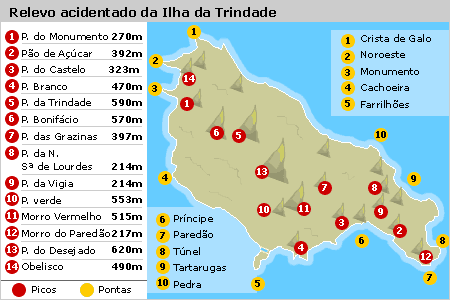
Two large islands make up most of the land area of and give their name to Trindade and Martim Vaz: Trindade Island (9.2 km²) to the south, and Martim Vaz Island (0.3 km²) to the north.
The other islands are much smaller and difficult to access. These are the islets of Martim Vaz, which are Ilha do Norte and Ilha do Sul, and rocks located 48 km east of Ilha Trindade.
Geology of the Trindade and Martim Vaz islands
The island of Trindade has numerous volcanic centres, the most recent volcanic activity occurred approximately 50,000 years ago at the Paredão Volcano at the southeasternmost point of the island. This activity consisted of pyroclastic flow that accumulated an ash cone.
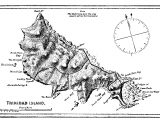
On the island of Trindade there are five volcanoes above sea level. The volcano known as the Trindade Complex is the oldest of the five and is characterised by intrusive and pyroclastic rocks.
The oldest rocks on the island can be recognised in the Cachoeira cove. There is also the Morro Vermelho formation, the result of an explosive eruption with lava spills called ankaratríca.[3] It is also known as the Morro Vermelho formation.
Other formations that stand out are the Valado Formation, where pyroclastic rocks occur; the Morro do Paredão, which represents the ruins of a volcano.
The Morro do Paredão is in danger of disappearing due to the erosive action of ocean waters. It is the only recognisable remnant of a volcano in Brazil.
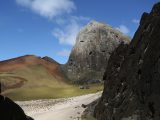
Trindade has a volcanic series that is characterised by being highly undersaturated in silica. Together with the Fernando de Noronha volcanic series, it is the most silica-saturated oceanic volcanic series in the Atlantic.
Flora and fauna of the Trindade and Martim Vaz islands
The environmental research on the ecosystem of the Trindade and Martim Vaz Islands is the responsibility of the research team of the National Museum.
According to studies by the naturalist Ruy Alves, there are 124 botanical species on the island, 11 of which are endemic.
The main plant species is the giant fern. The main terrestrial animal species on the island is the yellow crab (Geocarcinus lagostoma, Grapsus grapsus), which occurs even on the highest peaks.
In the past goats, pigs and other domesticated animals were left behind and as they disturbed the natural environment, the Navy made efforts to eradicate both exotic species. There are also seabirds.
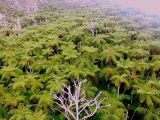
The variety of species in the sea is great, but the only one that occurs there is a fish, the cangulo, known among the Brazilian Navy garrison as “pufa” (“pufavô me pegar!”), and which attacks in flocks, like piranhas at the slightest sign of blood.
The islands of Trindade and Martim Vaz are the spawning grounds for a large contingent of green turtles (Chelonia mydas) and feeding grounds for the hawksbill turtle (Eretmochelys imbricata).
Trindade never ceases to amaze: thousands of giant ferns decorate the cliffs. It is one of the most amazing places on the island.
Trinidad Island – Economic exploitation
What is the importance of Brazil spending money to maintain isolated military personnel on such a small island far from the mainland? First of all, it is important to stress that maintaining a garrison, of 32 men on average, in a place as difficult to access as Trindade, has a high cost and requires a very large organisation.
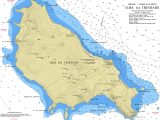
To give you an idea, just to transport the soldiers and material on a ship like the “Graça Aranha”, the Navy spends an average of R$10,000 per day at sea.
A round trip between Rio de Janeiro and Trindade takes at least six days.
The value is still not ideal, according to the ship’s chief mate (commander responsible for the administration of the vessel). The cost of the operation, which in April 2002 involved a total of 125 people on board, must include food, security, water, fuel, payments, hygiene and other expenses.
Even if you add up the labour and money spent, travel and accommodation, you can tell that it’s all very little compared to the importance of the island of Trindade for the country.
It is not only the importance of ecological and natural beauty. Although isolated and small, Trindade is very important economically for Brazil.
The government took a strategic view in 1957, when it decided to give the Navy the task of occupying and guarding the place, based on the international agreement on seas and oceans.
This agreement, which was signed in 1982 during the “United Nations Convention on the Law of the Sea – Jamaica Convention”, guarantees economic exploitation to the nation closest to 200 nautical miles (approximately 370 kilometres) of marine waters in a straight line from its territory.
In other words, an amicable agreement was made, giving countries the right to exploit an exclusive economic zone of their seas within this established limit.
For this reason, Trindade is a strategic point, as it is a national territory located 640 nautical miles (1200 km) in a straight line from Vitória, or even exclusively Brazilian waters in the middle of the Atlantic.
This is the great advantage of keeping the island occupied. Brazil has the right to enjoy the riches of the waters in this region, such as fishing and the exploitation of oil and other minerals.
In addition to the power of military control and responsibility for actions in the region, such as a possible environmental disaster or illegal activities in the country, such as casino ships.
Considering the same strip from the mainland, between the island and Espírito Santo, this area of exploration becomes larger. Adding the area on both sides (island plus mainland), the area that can be exploited occupies 2/3 of the space bathed by the Atlantic Ocean.
Nor can one deny the riches that this fraction of the national territory possesses in its lands. The island is a very diverse natural laboratory.
The Navy is conducting studies on these lands. The sailors and researchers who remain on site carry out meteorological, tide gauge and geophysical observations in the region, which serve as information for various institutions in the world.
Trinidad Island – Shipwrecks
The sea gets dangerous in Trindade. Two shipwrecks mark the landscape of Praia dos Portugueses, where the Navy base is located on the island.
As soon as you see Poit from the sea, you can already see the fittings of a ship stranded on the sand and a sailboat on the rocks of the hillside.
The sailboat belonged to a French couple who were travelling around the world on the oceans.
In 1994, they landed on Trindade Island to celebrate the wife’s birthday, leaving the boat moored facing the beach.
According to sailors who know the place, a strong wind caused the anchor to come loose from the bottom and throw the sailboat against the rocks. The couple spent a month on the island waiting for a visit from a Navy ship to be rescued.
A bigger wreck, however, occurred with the Chinese fishing vessel Hwa Shing.
A story told by the Poit’s sailors shows that the ship’s crew mutinied over food rationing, killed the captain, injured the cook and threw the vessel into the island’s coral reefs.
After the ship ran aground, the entire crew of foreigners was arrested by the Brazilian Navy and sent to the mainland.
Tourism and Travel Guide of the Trindade and Martim Vaz Islands
Tourism and Travel Guide of the Northeast
